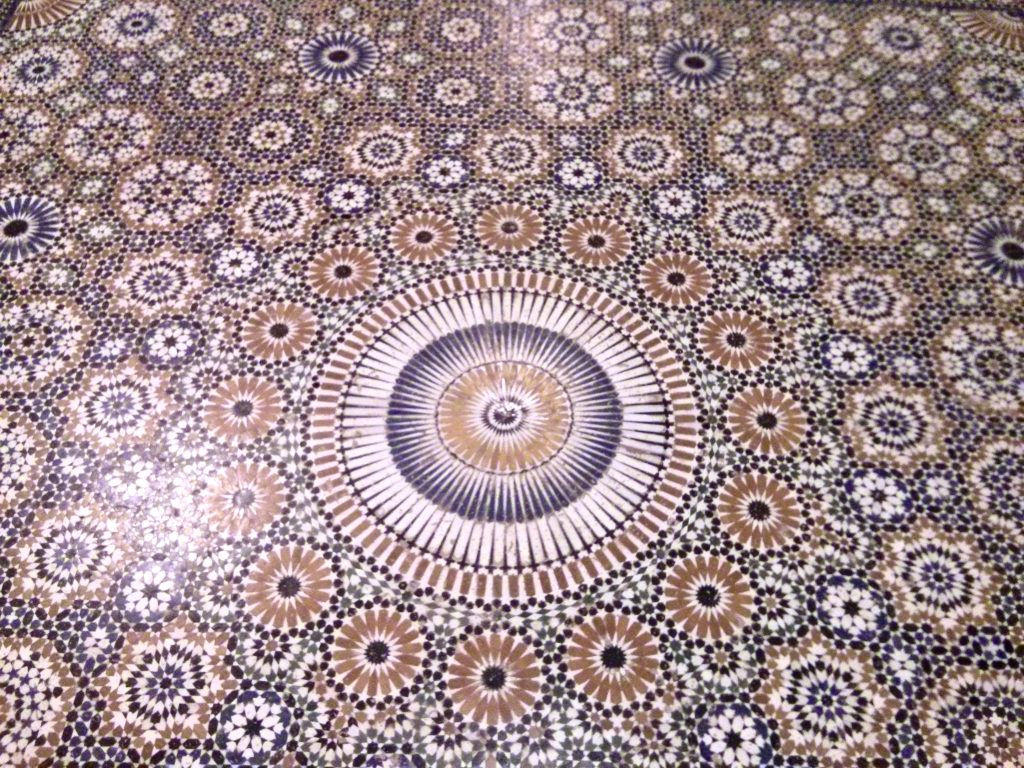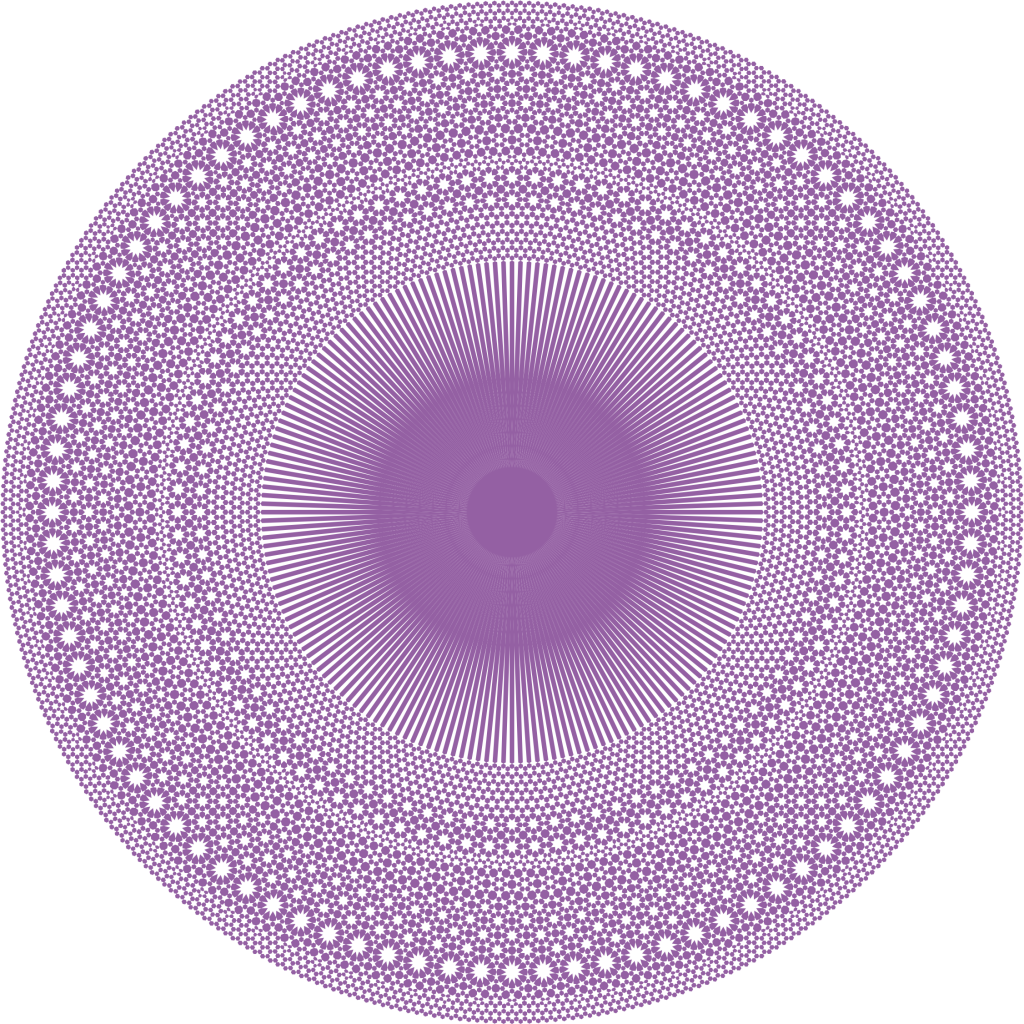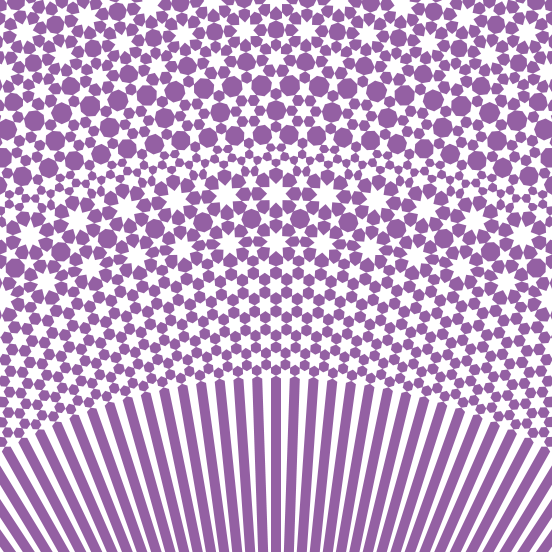This is the second of two posts about papers that will appear at the Bridges 2021 conference. This paper is related to Islamic geometric patterns, and was co-authored with John Berglund. In this case I played a supporting role. The core ideas are very much due to John; I contributed a few bits here and there, and helped with the writing.
One of the joys and challenges in the construction of Islamic geometric patterns is choosing combinations of star shapes. In the Moroccan zellij style, for example, we often see a very large central star, with as many as 96 points, surrounded by layers of peripheral geometry. Here’s a photo I took in Fez (I think of the floor of a carpet shop), featuring an 80-pointed central star.

The challenge when designing around a large star is to reconcile its high order of symmetry with the field of more standard shapes that surrounds it. The goal is to make the complete design appear natural and seamless. That’s an exceedingly difficult design challenge, one that increases in difficulty as you try to integrate larger stars.
In this paper we take a simpler approach to constructing designs with large stars. Instead of merging the star into a field of other shapes, we grow concentric rings of motifs outward from the centre to any desired distance. If you do this naively, motifs will grow larger and larger as you move farther from the star. Most of the meat of the paper is about preventing that from happening: we gradually step down the sizes of motifs to counteract their natural scaling with distance. The result doesn’t necessarily display the incredible ingenuity of zellij patterns like the one above, but we gain the ability to create designs with stars of any size. And because of the details of the construction, larger is better!
Here’s an example from the paper, a design featuring a 184-pointed central star. Click on it to view a zoomable PDF version, where you can see the individual elements of the design in full detail.

If you’d like experiment creating your own designs in this style, we’re pleased to offer you a browser-based app that John wrote:
In the app, you grow a “core sample”, a radial slice of polygons that gets repeated around the outside of a central regular polygon. The grid of buttons in the central region of the left sidebar offers you a varying set of choices for legal rings of polygons you can glue on to the outside of the current design. The buttons at the top left let you choose whether to look at the tiling or the corresponding geometric pattern. On the right you see visualizations of the core sample above, and the finished design below. If you’d like a larger view, you can also use a separate fullscreen version of the app.
As always, full details are in the paper, which is available online at the Bridges Archive.
Amusing side note: the main email address associated with this website is isohedral@isohedral.net; that’s not my primary address, but all mail to that address gets delivered to me. For many years, John used the email address anisohedral@yahoo.com. I’m isohedral, he’s anisohedral. We should be mortal enemies, and yet we somehow found a way to bridge our differences and work together.


Leave a Reply